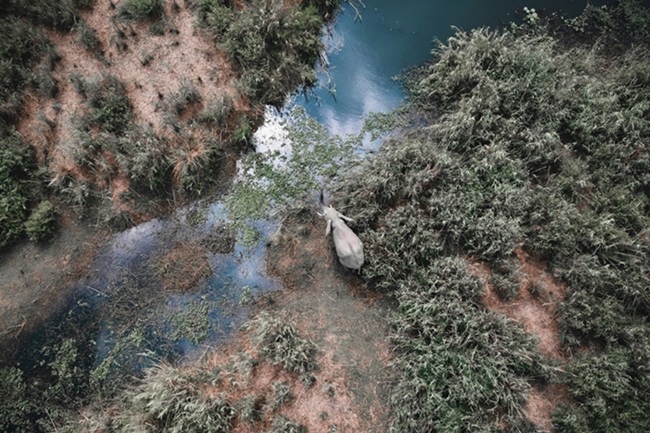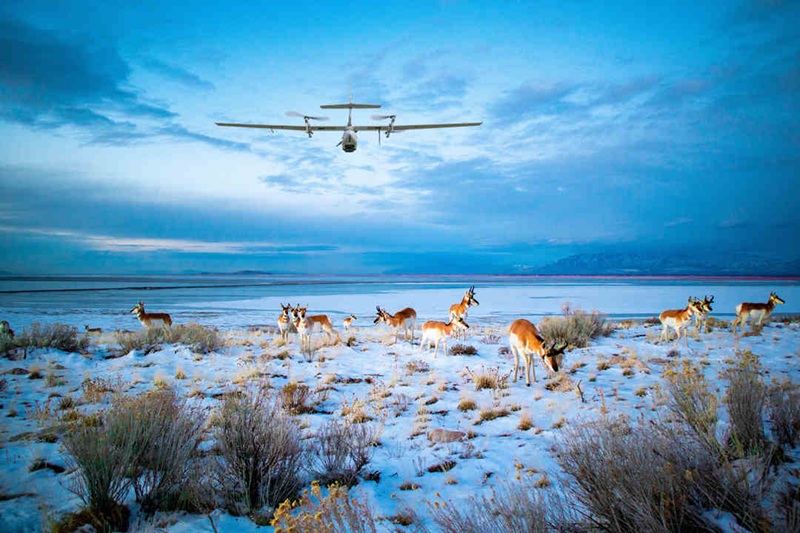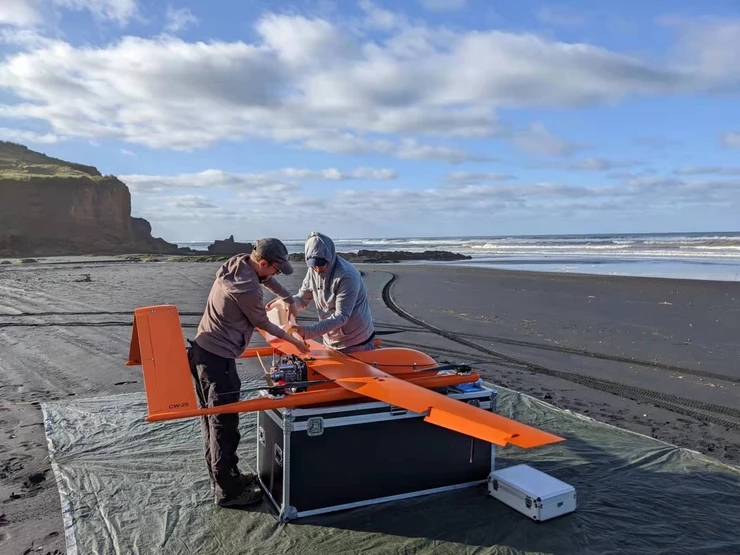Drones A Key Tool For Conservationists, Environmentalists
October 30, 2025
Drones are becoming an increasingly common and important tool in the arsenal of conservationists and environmentalists of all stripes.

Dear EarthTalk: How are drones being used to promote conservation? —L.J. Smith, Smithfield, RI
When you hear the word drones, perhaps you picture flying and faceless androids on some top-secret intelligence mission, armed to the teeth and stealthy as a bandit. What you probably are not picturing are drones flying over burnt forests dropping seed pods or skimming the surface of the ocean scanning for endangered whales. However, in recent years, drones are being used for exactly that.
Drone producer JOUAV defines wildlife drones as “unmanned aerial vehicles designed to monitor, track, survey and protect wildlife and their habitats.”
They come in all shapes and sizes with three main types: fixed wing, which are like traditional airplanes and can cover large distances; multi-rotor drones, which have multiple rotating blades and can hover in place to capture detailed images in confined areas at low altitudes; and hybrid drones, which are a combination of the other two.
With drone technology at their disposal, scientists can monitor and implement conservation efforts with more accuracy and less disruption. Take, for instance, the Snotbot: a drone that flies through the exhaled air of whales and collects information on DNA, stress and pregnancy hormones through respiratory droplets. Charlotte Edmond of the World Economic Forum notes the Snotbot helps scientists “understand whales and dolphins, many of which are critically endangered, in a way which doesn’t stress them out.”

Wildlife drones also combat poaching and natural disasters. In Africa and India, governments and wildlife protection groups use thermal imaging and night vision to track illegal activity. In the wake of wildfires in California, drones are powerful tools for reforestation, cutting response times from years to months, and LiDAR technology helps map out deforestation areas.
A study conducted in Kumamoto, Japan showed that 80 percent of seeds delivered by drones in biodegradable pods sprouted, compared to 30-50 percent by manual planting. This promising statistic offers hope into restoring burnt and damaged ecosystems.
However, with powerful technology, also comes a staggering price. Drones are costly, no doubt– about $116,000 each. And most countries are protective of their air space. Laws often require drones to have licenses, meaning wildlife drones have a lot of red tape to fly through before they can save the world.
Nonetheless, drones are playing an increasingly important role in nature conservation efforts. You can help propel these efforts by donating to wildlife organizations such as the World Wildlife Fund or writing to local conservation teams on the benefits of wildlife drones.

CONTACTS
JOUAV How to Use Drones for Wildlife Conservation?
How ‘SnotBot’ and 2 other drones are helping save endangered species
EarthTalk® is produced by Roddy Scheer & Doug Moss for the 501(c)3 nonprofit EarthTalk. See more at https://emagazine.com. To donate, visit https://earthtalk.org. Send questions to: question@earthtalk.org
